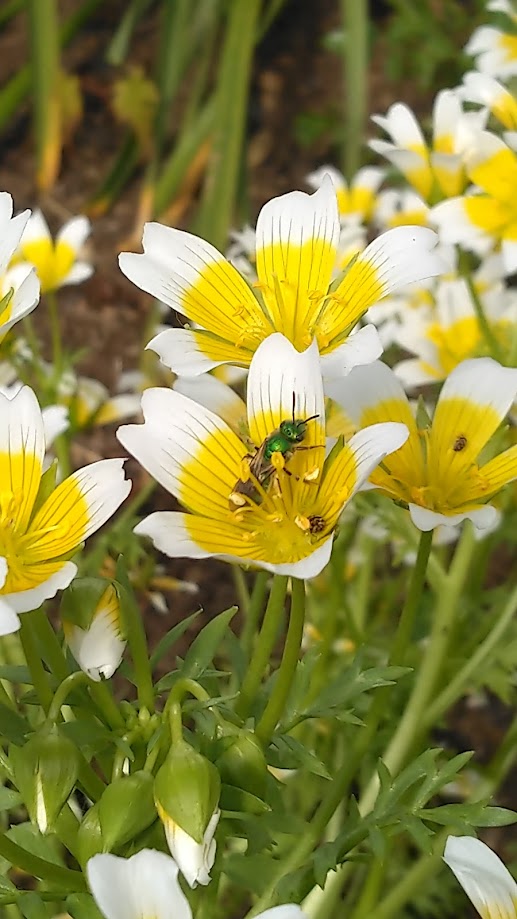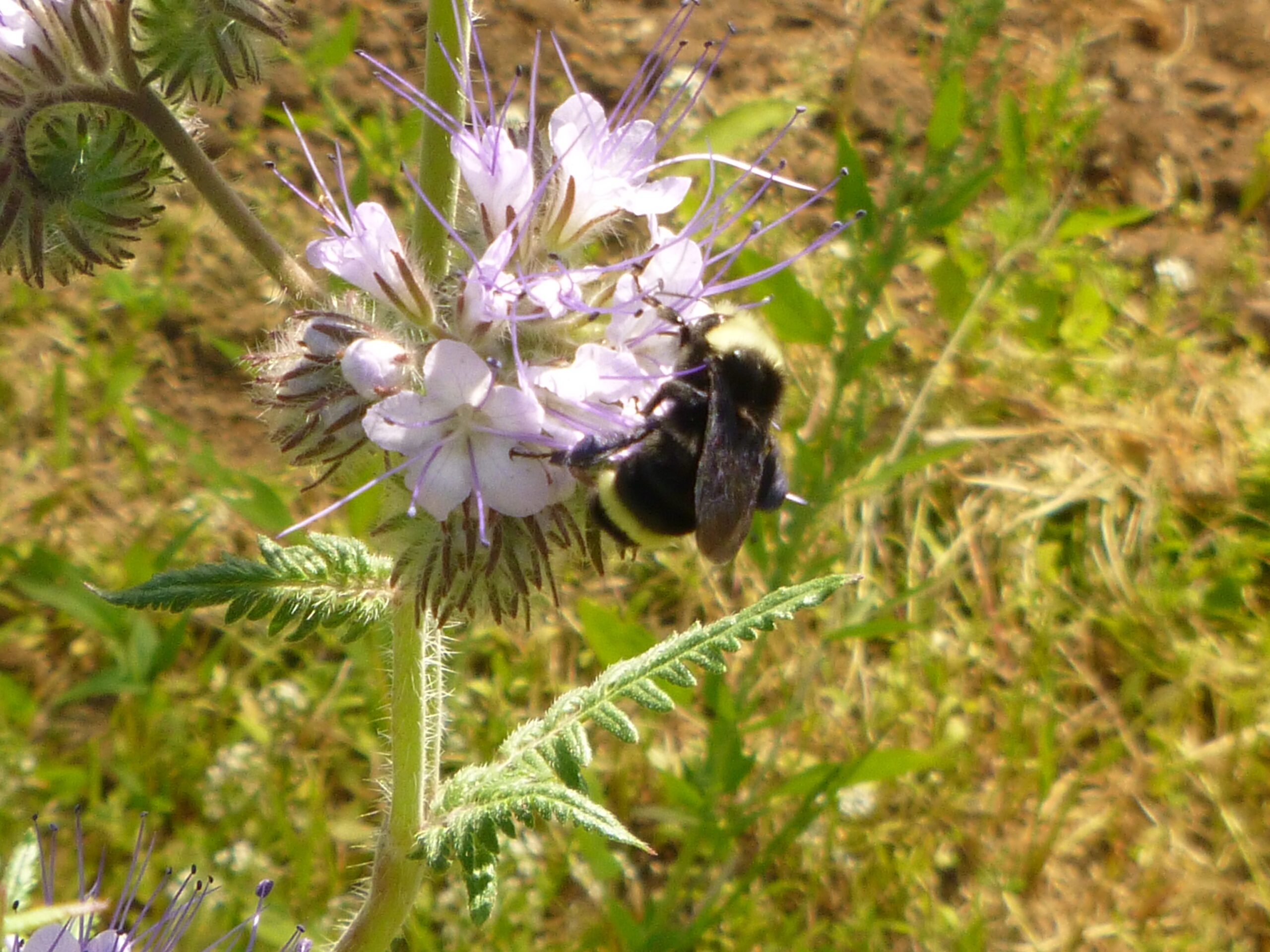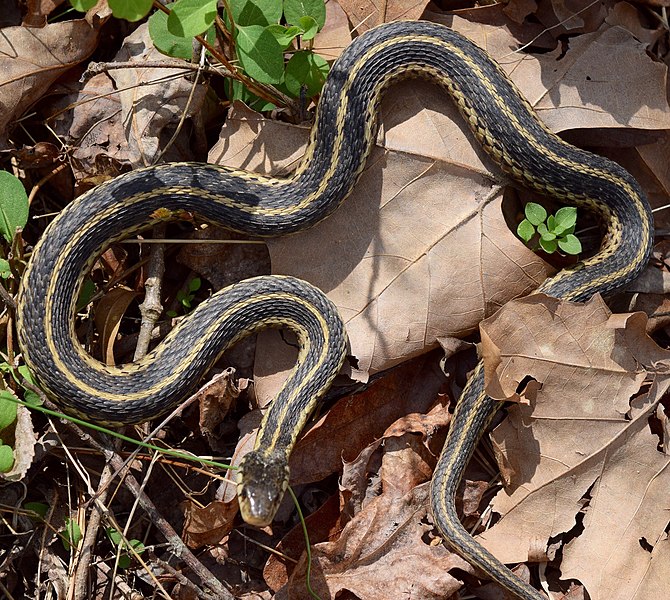
Metallic green sweat bee pollinating Douglas’ meadowfoam in Nursery Co-Manager Edward’s Bellingham garden
Pollinators are some of your greatest allies when it comes to your home garden and orchard – not to mention the essential role they play for the whole ecosystem. Native pollinators include (but are definitely not limited to!) bees, butterflies, moths, flies, wasps, and birds. You can attract pollinators by planting flowers that provide nectar, pollen, and shelter. And how can you keep unwanted pests out of your plants and trees without harming those pollinators? We’ve got five tips for pollinator-friendly pest management to help you grow healthy fruit while also growing a healthy ecosystem.
1) Plant disease-resistant varieties. When planting, choose varieties that have few pests and diseases and do well in this maritime Northwest climate. Asian pears and Japanese plums are some of our go-to recommendations for folks looking for organic home fruit growing. Check out our shop for scab-resistant apples, too!
2) Keep your plants happy and healthy. Healthy plants can resist and recover from pest damage far easier than unhealthy ones. Prioritize building healthy soil, make sure your plant is in the right spot (consider light, drainage, fertility, airflow, and soil type), and keep your garden/orchard watered as necessary.
3) Encourage pest predators. Let natural predators do your work for you! Parasitic wasps, lacewings, and ladybugs are just some of the predators that can keep harmful pests at bay. For example, snakes are effective predators for slugs, and bats for mosquitoes. Leave wild areas on your property that you don’t mow or spray – these can provide a valuable habitat for pest predators. You can even allow a *small* pest population to build up on sacrificial plants so a predator population can grow alongside it.

4) If you must spray, spray in the evening or early morning. If you’ve tried tips 1-3 and still have pest problems, you may decide that pesticides are your best option. If this is the case, be sure to apply when pollinators aren’t foraging (often in the evening and early morning). Always read the directions for proper instruction, and do not apply in windy or rainy conditions. You may want to hire a licensed pesticide applicator.
5) Use soaps and oils in place of toxic pesticides. There are often gentler alternatives to toxic pesticides that will keep pest pressure low while keeping your pollinators happy. Our team often recommends neem oil, diluted dish soap, or even a strong jet of water to knock off aphids and mealy bugs. As always, read the directions of any product you apply, no matter how “natural” it seems. Some active ingredients to avoid: spinosad; acetamiprid; clothianidin; dinotefuran; imidacloprid; thiamethoxam.


